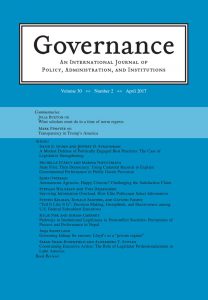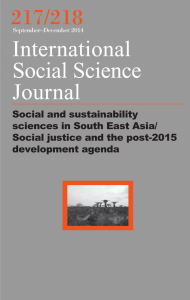The DeMcDonaldization of the Internet
 On this blog, I typically discuss the intersection of social theory and the changing nature of the Internet (e.g., using Marx, Bourdieu, Goffman, Bauman, DeBord and so on). In a chapter of the new third edition of the McDonaldization Reader edited by George Ritzer, I argue that what we are seeing is a general trend towards the deMcDonaldization of the Internet.
On this blog, I typically discuss the intersection of social theory and the changing nature of the Internet (e.g., using Marx, Bourdieu, Goffman, Bauman, DeBord and so on). In a chapter of the new third edition of the McDonaldization Reader edited by George Ritzer, I argue that what we are seeing is a general trend towards the deMcDonaldization of the Internet.
The shift from a top-down centrally conceived and controlled “Web 1.0” to a more user-generated and social “Web 2.0” is a shift away from the dimensions of McDonaldization as Ritzer defines the concept. For example, a corporate-generated website that does not allow user-generated content is paradigmatic of Web 1.0. The site is produced efficiently by few individuals, making it predictable, controllable and relatively devoid of outside human input. Web 2.0, alternatively, is not centered on the efficient production of content [I’ve made this argument previously]. User-generated content is, instead, produced by many individuals, making it much less predictable –evidenced by the random videos we come across on YouTube, articles on Wikipedia, or perhaps the best example is the downright capricious and aleatory experience of Chatroulette. The personalization and community surrounding social networking sites are hard to quantify and make the web far more humanized. Thus, Web 2.0 marks a general deMcDonaldization of the web. Examples of these points are further illustrated in the chapter.
 This conclusion also counters the thesis that McDonaldization is something that will only continue to grow – opposed to the “grand narrative” that Ritzer (and Weber before him) put forth.
This conclusion also counters the thesis that McDonaldization is something that will only continue to grow – opposed to the “grand narrative” that Ritzer (and Weber before him) put forth.
Finally, further consideration needs to be given to the various ways in which Web 2.0 remains McDonaldized, rationalized and standardized. Many of the sites that allow for unpredictable user-generated content do so precisely because of their rationalized and standardized -and thus McDonaldized- underlying structure. In many ways, our Facebook profiles all seem to look and behave similarly. The rationalized and standardized structures of Web 2.0 seem to coexist comfortably with irrational and unpredictable content they facilitate. ~nathanjurgenson.com






1467-7660/asset/DECH_right.gif?v=1&s=a8dee74c7ae152de95ab4f33ecaa1a00526b2bd2)
Yeah. I’m a college kid fixated on internet culture and how it’s impacting contemporary culture. The anonymity and level playing field offered up by the internet is a force to be reckoned with, but don’t put all your chips in on the internet just yet. Not only is government intervention still a contentious issue globally (Australia is implementing a national banned list, duh for China, and net neutrality is still a resolved issue in the united states), but the content that users seek out on the internet is at least partially dependent on TV and old media. Even though people have access to thousands of new artists’ songs on the internet, people on the internet are still primarily choosing to listen to artists they’ve heard about from the radio and tv. The same is true of twitter, the most followed people on twitter were people already famous before the internet. It’s a crude measure, but you can look at the most watched videos on youtube and twitter to get an idea of what people are looking at. And when people are actually generating content on the internet, they’re most often remixing or referencing old media. The viral videos of Rickrolling, Harry Potter Puppet Pals, and Daft Hands are good examples of this (they are all in the youtube top 100), also the rise of youtube commentators like Philip DeFranco, Ray William Johnson, and Shane Dawson who get tons of hits just by talking about what’s on TV, and then the entire rise of Machinima theatre, which is where you film sitcoms and shows inside of a video game (Red vs Blue). And finally, there’s content that’s entirely brand new. There’s a substantial chunk of new content on the internet constantly being offered up but it doesn’t get the traffic that the other types of content gets. I’d say we’re in a hybrid state between old media and new media. Eventually the opinions of individual bloggers and the like will command more sway as the internet circulates these artists around, and maybe even use TV coverage to boost their clout, like Tay Zonday and David After Dentist.
And here’s alternate artwork of Ronald McDonald courtesy of the people of the internet.
http://pzrservices.typepad.com/advertisingisgoodforyou/images/2007/11/17/ronald_goes_ape.jpg
http://nexuslex.files.wordpress.com/2009/12/joker6.jpg
Interesting argument! While it seems like the internet does still suffer some traits of McDonaldization, it is in many ways an institution that debunks the McDonalidization thesis. If we look at the five continua, it appears that the standardized framework of the more structured sites still allows for extensive to the extent that the prosumers add content that is unique, has local ties, is temporally specific, humanized, and enchanted.
Keri